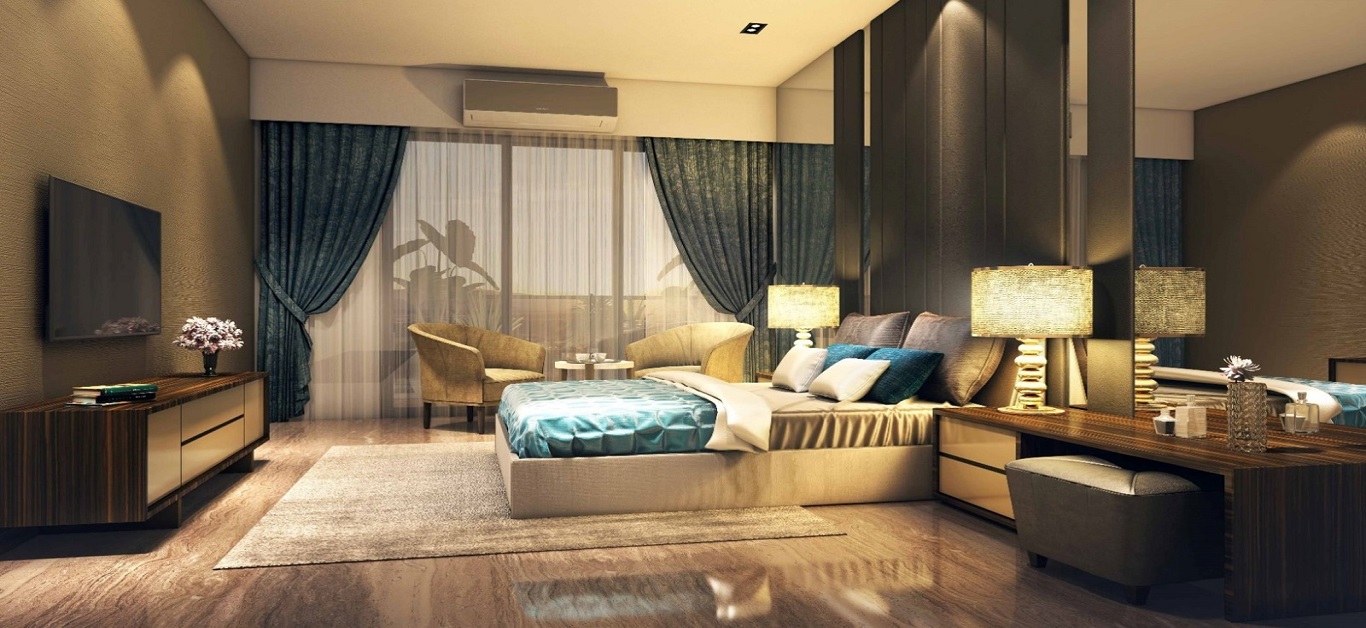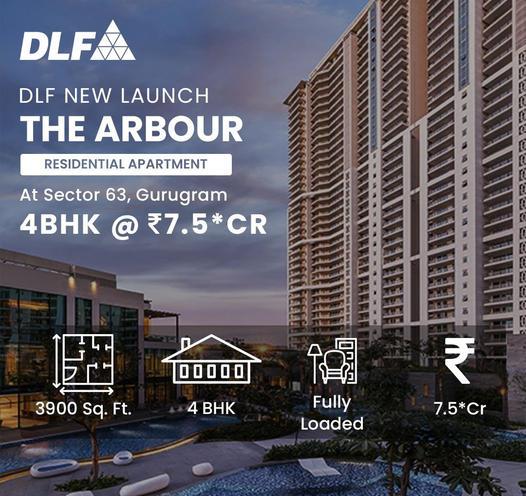DLF Sold Flats Worth Whopping Crores Just Within 3 Days Of Launch. What’s Driving The Surge In Luxury Home Sales In Gurugram?

Luxury homes in India are selling like favourite foods. Yes, you read that right. According to Knight Frank India statistics, India’s luxury home market spiked greatly in 2023, with 3.29 lakh housing units sold. For the first time, sales in the premium sector (above Rs 50 lakh) exceeded those in the mid-segment, with 72% of housing units sold in the premium category. Units priced over Rs 1 crore accounted for 37% of sales.
In the major cities, India’s housing industry has shown surprising resilience after COVID-19, catalysed by pent-up demand and rising expectations for homeownership. At the same time, the luxury category has experienced a true boom. According to a survey by property consultancy Anarock Group, the percentage of premium homes sold in India has tripled in the last five years. Luxury apartments costing more than Rs 1.5 crore ($179,650) accounted for 21% of residences sold in the top seven Indian cities in the first quarter of 2024. It was 7% during the same period in 2019.
For example, take the cases of realty developer DLF.
DLF is betting big on widening under super luxury consumption, with 90% of the 11.6 million square feet of projects it wants to launch in FY25 (with a total revenue potential of Rs 36,000 crore) falling into the super luxury category. According to Aakash Ohri, joint managing director of DLF Home Developers Ltd., the projected launches would comprise apartments priced at Rs 60 crore or more in Gurgaon and villas priced at or above Rs 50 crore in Goa.

In only three days of the launch, DLF Privana West in Gurugram sold all 795 of its apartments for Rs 5,590 crore.
DLF’s Arbour, which launched in March 2023, too saw pre-launch sales of Rs 8,000 crore in three days.
The realty developer had a sale of Rs 7,200 crore from its other luxury project, DLF Privana South in Gurugram, which sold out in 72 hours of its launch. This exclusive enclave will have 1,113 luxury homes across seven towers, including 4 BHK apartments and penthouses. DLF Privana South will be part of a bigger development, DLF Privana, which spans roughly 116 acres in Sectors 76 and 77.
The sale was a repetition of what happened about a year ago when an image of a crowd in front of the DLF office in Gurgaon went viral on micro-blogging site X to buy the Rs 7.2 crore luxury apartments. These quick pre-launch sellouts hint at DLF’s growing demand for high-rise luxury units that reward the highly aspirational DLF lifestyle.
In April, another Delhi-based developer, Ashiana Housing, said it had sold 224 homes in Ashiana Amarah phase-III for INR440 crores in 15 minutes of its launch. The developer said it received over 800 checks (approximately 5 lakh to 50 lakh) for 224 units.
TARC Ltd, another real estate developer, mentioned its highest-ever pre-sale of Rs 1,612 crore and Rs 415 crore in FY24. The business stated that it continues to see strong demand in the luxury residential market, mostly in Delhi and Gurugram.
Is the hype about opulent homes limited to the nation’s capital, or is its allure extending elsewhere?
It’s not only Delhi/NCR. Luxury homes in every major city are on fire. Mumbai, the country’s largest and most expensive real estate market, has established new milestones for property transactions. Since the last several quarters, the country’s commercial capital has seen several large-ticket record-setting transactions with industrialists, CXOs, actors, and sports figures. According to an Anarock study report from last year, around 18% (approx. 65,680 units) of the total 365,000 units sold in the top seven cities in 2022 fall into the luxury category. In comparison, the luxury sector accounted for only 7% (or around 17,740 units) of the total 261,000 units sold in 2019.
So, what’s behind this luxury home rush?
The YOLO.
An overall pattern of premiumisation has spread across the market and has come to display consumer demand in India because it produces more HNIs due to a rapid pace of wealth creation and pent-up demand from the Covid times and the YOLO (you only live once), are driving sales of luxury products. As per CRISIL Ratings, listed big residential establishers should be able to achieve 10-12% volume growth in the current fiscal year after a projected increase of over 14% on a high base in fiscal 2023–24 if premiumization and expanding per capita incomes continue.
In an interaction with a media source, Mr Ohri stated that he has seen that in the last two or three years (after Covid), people have suddenly started to realise that life is short and, hence, let’s live it up. People are intentionally investing more money in their homes. They want bigger, better houses with better amenities and are willing to pay for them.

The famous FOMO.
There is a detectable fear of missing out (FOMO) in affluent Indians when it comes to getting the most coveted properties. The desire to get the best alternatives before others adds greatly to the increased interest and transactions in this niche market. The lack of luxury property alternatives and the attractiveness of the most sought-after homes instil a feeling of urgency in prospective buyers. In a market where exclusivity is valued, the fear of missing out on a luxurious property motivates people to buy these high-end homes practically as they enter the market.
Real Estate is marking its prominence in the riches’ portfolio.
Real estate has made its way into the portfolios of the wealthy. The pattern has been going on for two years. Ultra-high-net-worth and high-net-worth people began investing in luxury real estate in 2022, according to India Sotheby’s International Realty’s annual Luxury Outlook Survey 2023, published last year. 75% of the super-rich persons polled by India Sotheby’s International Realty expected real estate would do strongly over the following two to three years. 61% of them wanted to buy ultra-expensive homes. The favourite places were Delhi/NCR, Mumbai, Goa, and Bengaluru.
COVID and geopolitical crises like the Russia-Ukraine conflict and the war in West Asia have encouraged the wealthy to infuse their funds in real estate, which is considered comparatively safe from severe volatility caused by global disruptions.
In addition to the potential for economic disruptions, inflation is a concern. “HNIs and Ultra-HNIs view real estate as a key long-term hedge against inflation,” says Taral Sha, Managing Director of Ahmedabad-based developer Shivalik Group. The increase in raw material prices, like steel and cement, suggests that property prices will rise shortly, making this a great time to buy.
Aspirational push.
Gulam Zia, senior executive director at real estate broker and consultancy Knight Frank, says the luxury bubble will last another two years. “These establishments are being buyed by the upper middle class and those at the top of the pyramid.
As the economy’s wealth creation rate is expected to rise, more Indians are entering the wealthy. Luxury flats meet aspirational demand since bungalows and large homes in the city are out of reach for even the wealthy. Another part is their desire for luxury. The emerging affluent class aspires to live a lavish lifestyle, which such flats provide in plenty with plenty of green space and recreational facilities. Purchasing a luxury flat means buying an exclusive address that can be flaunted, too.
Limited inventory.
There is a scarcity of luxury flats in prime places like Gurgaon. Also, in the past, the wealthy owned bungalows, which are extremely expensive today and in short supply owing to location and community preferences. Furthermore, a large home in a colony like Greater Kailash is less appealing to an HNI than a beautiful flat in Gurgaon in terms of security, navigation, facilities, design, quality, sophistication, and exclusivity.
In concept, land in Gurugram is limited, and the pace of urbanisation is rapid. Over half of Fortune 500 businesses have offices in the city, and the ratio of white-collar workers is increasing. Following the success of Cybercity 1, another Cybercity is under development. With a strong infrastructure and rising employment prospects, every real estate investor counts on a white-collar professional from a major global MNC to be the final buyer.
The NRIs are trying their hands in luxury homes.
Developers are designing projects with this section of buyers in mind. NRIs are an important sector in the area as they like to buy homes that provide amenities identical to developed counterparts, with security and exclusivity. Luxury flats in Gurgaon, for example, fulfil all such aspects. NRI money decently backs the luxury house market. NRIs now account for approximately one-fourth of all home sales at big developers, up from 7-10% pre-pandemic levels. What drives up costs is that new developments in important areas by reputable builders like DLF do not meet the tremendous demand. According to analysts, NRI investment might be as high as 20% to 25% for some top-tier developers.
Industry pundits stated that DLF’s sales from NRI investors surpassed Rs 3400 crores in fiscal year 2023-2024, highlighting the strategic relevance of NRI markets in DLF’s overall growth strategy. Proactive efforts like specific inventory allocation for NRI buyers and synchronised project launches across local and foreign markets have been critical in increasing NRI sales, which have risen from around 5% to over 20% in the last two years.
Why is Gurugram specifically witnessing this hype in luxury homes?
According to Haryana government predictions, Gurugram is a rising city with a population of around 1.5 million, which is predicted to reach 5.5 million by 2041. Housing demand will rise in tandem with population growth. The end customers of this market are largely white-collar, operating from posh cabins in Cybercity and along the southern periphery road. Inherited money funds a large part of the Gurugram market.
Half of the hype is fabricated, and the boom is made up. Some of it may be authentic and driven by homes where both couples earn favourably, and the others of the sale are the investors. Investors and end-users saw this to be the best time to put money into Gurugram’s real estate market.

As the city grows into an urbanisation, investors are enticed by the prospect of long-term success. Gurugram’s attraction extends beyond immediate benefits, with foresight making Gurugram city a long-term strategic investment. The belief in sustained growth over the next five years is not speculative; it is based on ongoing development initiatives, the city’s economic resilience, and the robust confidence of investors and end users who visualise Gurugram, a key player in the unfolding story of Delhi-NCR’s real estate success.




